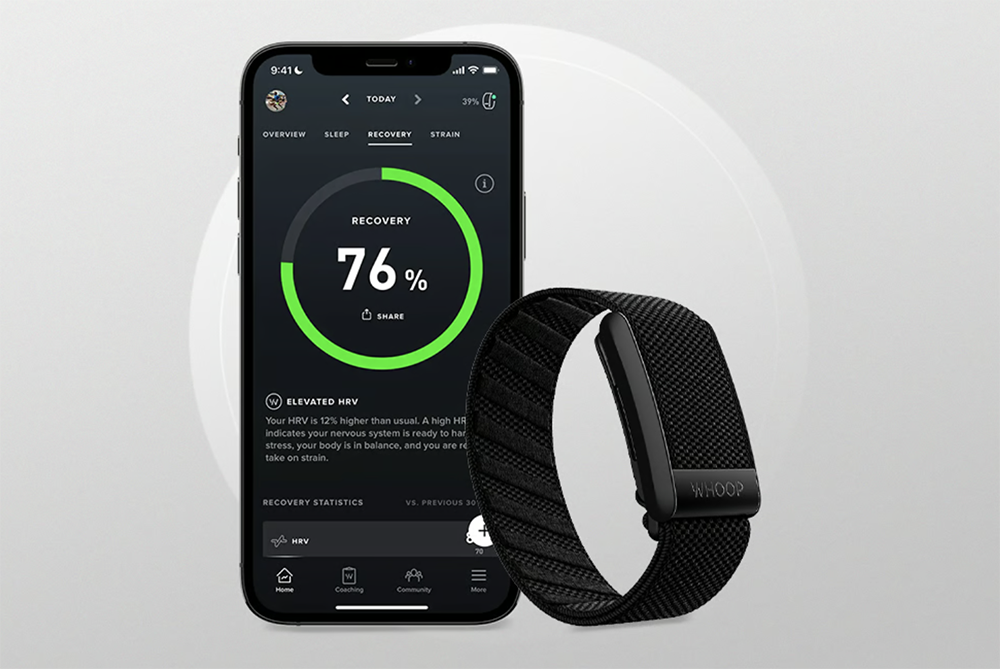My resting heart rate is 49 and I often sleep a full eight hours a night. I wish I could say these were the only benefits of wearing a Whoop fitness strap. But as a strategic communications professional I’ve also drawn professional lessons from it. I’m a bit of an evangelist about them, to be honest. Here’s why.
The Whoop is a wearable fitness tracker. Rather than accumulating ‘steps’ or achieving a certain ‘calorie burn’, it tracks sleep. Then the next morning, it tracks your recovery. When you work out it tracks your strain. There’s a community of Whoop users. The biggest thing we tend to talk about is how to get a good recovery score. It won’t surprise you that the best way to get a bad one is to drink alcohol. It ruins your sleep and then affects your ability to perform the next day.
In many ways, I’m glad I only discovered this thing in my 40s. If I’d had one at college it would have ruined many a night out. As simple as it sounds, the balance between pushing your limits and not overdoing it is quite a delicate one. I also think it’s almost scary how much the Whoop comes to control my decision-making. It’s like having a benevolent angel on my shoulder. “Go to bed, Matt,” it’s saying. “You’ll feel better in the morning.”
We all need such an angel. But sometimes I stay up late on purpose because no fitness strap is the boss of me, man. By tracking my sleep routines and recovery on a daily basis, I began to notice patterns. I also noticed that if I overtrained, it could take me a few days to bounce back. It’s helped me avoid overtraining and get more efficient workouts. Fitness is not only about the efforts you put in during a workout, but is also about the recovery and rest. Only when you recover can you be at your best for the next workout.
As a strategic communications consultant, balancing peak performance with adequate rest is familiar. The introduction of the Whoop helped my work performance and strategy too. Here are some vital lessons I’ve drawn from wearing the Whoop:
Understanding my Peak Performance Times. The Whoop strap data helped me discover when my mental energy is at its peak. It’s helped me pinpoint the times of the day when I’m most alert and creative. That’s allowed me to schedule my most demanding tasks during these periods.
The Crucial Role of Recovery: In strategic communications, it’s easy to overlook rest. But as with physical training, recovery is paramount. The Whoop strap emphasizes how my work performance links to how well-rested I am. It’s pushed me to focus on quality sleep and downtime activities. My productivity has improved.
Stress Management: Monitoring my body’s responses to stress through the Whoop strap helped. If my stress score is high a couple of days in a row, I can pay attention to mitigation. I can manage stressors better, and I can communicate better with my colleagues. I like to say that monitoring my Whoop stress score has helped maintain my patience.
Data-Driven Decision Making: I’ve been able to make informed decisions. If I need a nap, I’ll take one. If I’m exhausted, I can reprioritize work for the day ahead. It means that on average, I’m making smarter choices and able to manage a busy workload. I also talk more about data-driven choices in marketing and communications. What’s the return on investment of our activity? How are we measuring our success?
As I say, I’m a Whoop geek. Do you have one? Have you thought about it? Or it’s possible you think they’re terrible things. I’m eager to hear your insights, either way.


